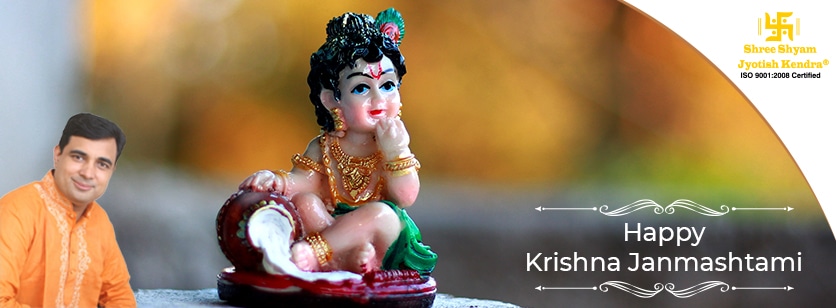
Janmashtami or Krishna Janmashtami is one of the most popular and celebrated festivals in India. Dotted by grand poojas and traditions of Dahi Handi in several parts of India, Krishna Janmashtami not only happens to be one of the widest celebrated festivals in India but is also easily one of the oldest festivals in the subcontinent.
Celebrated on the eighth day of the Krishna Paksha of the Hindu Lunar month of Shravana, Janmashtami is the celebration of the birth of Lord Krishna, the eighth incarnation of the Lord Vishnu. Falling on the 12th of August in the year 2020, Janmashtami is known by a number of different names across the nation, where Gokulashtami is one of the more famous names. This article details the history behind Janmashtami and how it is celebrated across India.
The Legend of Janmashtami
Lord Krishna is known to be the eighth avatar or reincarnation of Lord Vishnu, who promised the mother earth to take 10 incarnations whenever evil on earth got out of control. During the time of Lord Krishna’s birth, King Kansa was the evil overlord who got the prophecy that the 8th offspring of his sister Devaki will be his annihilation.Thus, on the midnight of the 8th day of Shravana Maas Krishna Paksha, Lord Krishna took birth as the 8th incarnation of Lord Vishnu. Lord Krishna then grew up away from the influence of his evil uncle, whom he defeated and slew years later, ridding the land of his evil rule. This established the reign of good over evil.
As the celebration of the lord coming to the earth and marking the end of the evil that King Kansa, the Janmashtami is celebrated as Lord Krishna’s birthday with great pomp and fervour all across the country. Since Lord Krishna was born on midnight, the celebrations last for 2 days, with the second day celebrated as Nand Utsav or Nandotsav.
Celebrations of Krishna Janmashtami
● Krishna Janmashtami is majorly celebrated in the towns of Mathura and Vrindavan, as Mathura is the birthplace of Lord Krishna and Vrindavan is where he grew up with his foster parents.
● Everywhere in India and outside countries where Krishna Temples exist, the temples are decorated, the lord is cleaned up and dressed in new clothes, and the devotees engage in processions, bhajans, kirtan and Satsang meetings as they wait for the midnight.
● A number of people even hold fasts on the day of Janmashtami, either before midnight or after midnight.
● For weeks before Janmashtami, especially in Uttar Pradesh, dramas and skits depicting Lord Krishna’s life are played. On the day of Janmashtami, the idols are brought out of the temples so the lord can celebrate with their devotees.
● Maharashtra and parts of Gujarat celebrate the day of Gopashtami with celebrations of Dahi Handi. A pot full of yoghurt (Lord Krishna’s Favourite) is hung 20 to 30 feet above the ground, and young devotees (called Govindas) form a human pyramid to reach the pot.
● Southern India celebrates Krishna Janmashtami by drawing images of Lord Krishna with rice on their floors while drawing his feet on the entrance.
● On the next day of Janmashtami, the Nanda Utsav is celebrated where devotees prepare 56 delicacies, or “Chhappan Bhog” for the lord.
Lord Krishna is loved across the country as he is always considered to be the people’s avatar. That is the reason why Janmashtami is not just a highly celebrated festival just in India, but it is also loved around the world by Krishna devotees. India’s number one astrologer, Pandit Pawan Kaushik details on the importance and the correct rituals of keeping a Janmashtami fast. Book your appointment to talk to the expert today. +91 9990176000
+91 9990176000 +91 9999097600
+91 9999097600
 CALENDAR 2024
CALENDAR 2024










